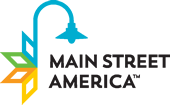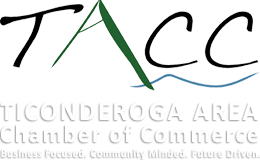The National Main Street Center’s experience in helping communities bring their commercial corridors back to life has shown time and time again that the Main Street Four-Point Approach succeeds. That success is guided by the following eight principles, which set the Main Street methodology apart from other redevelopment strategies. For a Main Street program to be successful, it must whole-heartedly embrace the following time-tested Eight Principles.

The Eight Principles
Comprehensive: No single focus — lavish public improvements, name-brand business recruitment, or endless promotional events — can revitalize Main Street. For successful, sustainable, long-term revitalization, a comprehensive approach, including activity in each of Main Street’s Four Points, is essential.
Incremental: Baby steps come before walking. Successful revitalization programs begin with basic, simple activities that demonstrate that “new things are happening ” in the commercial district. As public confidence in the Main Street district grows and participants’ understanding of the revitalization process becomes more sophisticated, Main Street is able to tackle increasingly complex problems and more ambitious projects. This incremental change leads to much longer-lasting and dramatic positive change in the Main Street area.
Self-help: No one else will save your Main Street. Local leaders must have the will and desire to mobilize local resources and talent. That means convincing residents and business owners of the rewards they’ll reap by investing time and money in Main Street — the heart of their community. Only local leadership can produce long-term success by fostering and demonstrating community involvement and commitment to the revitalization effort.
Partnerships: Both the public and private sectors have a vital interest in the district and must work together to achieve common goals of Main Street’s revitalization. Each sector has a role to play and each must understand the other’s strengths and limitations in order to forge an effective partnership.
Identifying and capitalizing on existing assets: Business districts must capitalize on the assets that make them unique. Every district has unique qualities like distinctive buildings and human scale that give people a sense of belonging. These local assets must serve as the foundation for all aspects of the revitalization program.
Quality: Emphasize quality in every aspect of the revitalization program. This applies to all elements of the process — from storefront designs to promotional campaigns to educational programs. Shoestring budgets and “cut and paste” efforts reinforce a negative image of the commercial district. Instead, concentrate on quality projects over quantity.
Change: Skeptics turn into believers and attitudes on Main Street will turn around. At first, almost no one believes Main Street can really turn around. Changes in attitude and practice are slow but definite — public support for change will build as the Main Street program grows and consistently meets its goals. Change also means engaging in better business practices, altering ways of thinking, and improving the physical appearance of the commercial district. A carefully planned Main Street program will help shift public perceptions and practices to support and sustain the revitalization process.
Implementation: To succeed, Main Street must show visible results that can only come from completing projects. Frequent, visible changes are a reminder that the revitalization effort is under way and succeeding. Small projects at the beginning of the program pave the way for larger ones as the revitalization effort matures, and that constant revitalization activity creates confidence in the Main Street program and ever-greater levels of participation.





